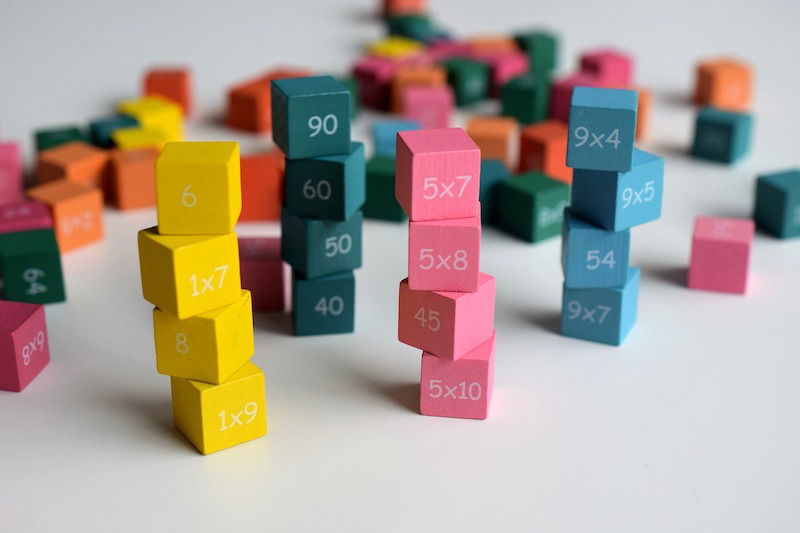
I Don’t Get It: Strategies for Reteaching
I was recently surprised when our son announced, “I can’t take my math test. I didn’t understand the whole chapter.” This was concerning because math is his strongest subject, and we were only on chapter two of a high-school-level course! I knew he needed to understand the material because it was foundational to later concepts. Thankfully, homeschooling perfectly accommodates the flexibility and responsiveness needed for reteaching. It also affords us the luxury of spending one-on-one time when learning hits a snag.
There are lots of great options for reteaching. Sometimes, reteaching can be as simple as going over the material once more (like when a teen checks out due to a shortened attention span). Other times, effective reteaching requires a radical change in the way material is presented. With a wealth of online resources available, you can find a variety of reteaching ideas to choose from. The key to choosing the right approach starts with evaluating your child’s current situation.
- Lack of engagement—If your child lacks interest, try changing up the mode of teaching to engage them. If your student initially read the material, incorporate visual graphics, hands-on materials, or audio presentations in your reteaching. There are many helpful online teaching videos available on a wide range of topics. For manipulatives, you can get creative with things such as food, toys (especially interlocking blocks), and puppets. We’ve used dried beans for studying economics, utensils for learning parts of speech, and shadow puppets for literature.1
- Complexity—If a topic seems to be overwhelming your child, try breaking down bigger, multi-part concepts into smaller, more manageable sizes. Help your child build confidence by demonstrating their knowledge of the smaller pieces in creative ways. Projects that give children a chance to employ their creativity can help students both learn new concepts and reinforce what they already know. Taking a project break may also relieve some of the stress of continually learning new information. Ideas include making a diorama or concept map, creating a theme poster or storyboard, producing a news segment, or performing a skit.
- Missing foundation—If your child has missed a step along the way, you can revisit previous material to identify the holes. Be sure to check that your student has gotten the vocabulary down pat. Sometimes, even though concepts were grasped, key vocabulary words may be lacking, making it harder to understand subsequent material. For example, your child could be struggling to identify adjectival phrases and clauses because they haven’t yet mastered terminology for sentence structure and parts of speech.
- Faulty assessment—A student’s understanding of material may not be accurately assessed through traditional testing. Some students can demonstrate their knowledge more effectively with alternatives such as oral interviews, portfolios, biographies, or creative projects. Alternative assessments don’t have to be overly time consuming. They can be as simple as having your student create a cartoon account of a historical event, give an oral presentation, or prepare a journal. Alternative assessments can give your child the satisfaction of better appreciating their progress. They can also help you expand the boundaries of their education by encouraging and rewarding creativity.
Consider creating an eclectic reteaching approach that incorporates variety through both projects and teaching methods. We can look to our Savior for examples of effective reteaching techniques. Jesus often repeated important lessons. Some of the methods that our Lord used were:
- Questions—Jesus asked, “For what will it profit a man if he gains the whole world and forfeits his soul? Or what shall a man give in return for his soul?” (Matthew 16:26). Questions engage the student by stimulating thinking.
- Parables—The parable of the good Samaritan engaged listeners (Luke 10:25–37). Jesus often used parables to illustrate points in impactful and memorable ways.
- Demonstration—Jesus washed the disciples’ feet, leading them by powerful example (John 13:3–17).
In addition to finding the right mode of reteaching, using the right pace is important too. Some learners get bored with a slower pace, while others need to go slow to avoid feeling overwhelmed. Not being forced to move on to new material when your child isn’t ready is a major distinction between traditional education and homeschooling.
Homeschooling at its core is customized education—we cover select material at the right pace for our children with the techniques that are most effective given their individual learning styles. We’re blessed to be able to tailor our children’s education to meet their reteaching needs in ways that valuably enhance learning.
Creation College Expo
Are you looking ahead to college options as your homeschooling student nears high school or even graduation? Plan to attend the Creation College Expo at the Ark Encounter, November 7–9, 2024. It’s a free event for students in grades 7–12 and provides the opportunity to talk one-on-one with representatives from excellent Christian colleges and universities across the nation. Register your student today at CreationCollegeExpo.com!
Footnotes
- A simple puppet theater can be made with a shoebox, parchment paper, and paper cutouts glued on craft sticks.

Answers in Genesis is an apologetics ministry, dedicated to helping Christians defend their faith and proclaim the good news of Jesus Christ.
- Customer Service 800.778.3390
- Available Monday–Friday | 9 AM–5 PM ET
- © 2025 Answers in Genesis





